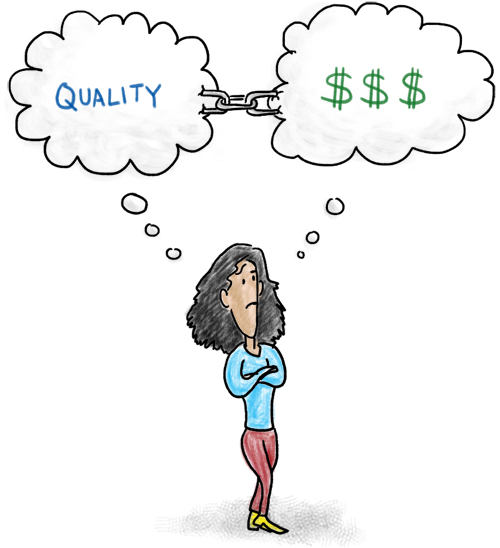Price: Why Lower Isn’t Always Better
I want to tackle the issue of forecasting and projections next in the MBA Mondays series but I don’t yet have an outline in my head of how I am going to approach this critical subject. So I am taking a breather this week and instead will tell a story I heard from a marketing professor in business school.
This professor did a lot of consulting on the side. He was known as a highly analytic marketing expert. He was asked to take on a french producer of champagne as a client. This champagne producer was trying to enter the US market but was not selling very much of their product in the US.
The professor did an analysis of the “five Ps”; product, price, people, promotion, and place. He determined that the champagne was of very high quality, it was being distributed in the right places, and that the marketing investment behind it was substantial. And yet it wasn’t selling very well.
He did an analysis of comparable quality champagnes and determined that this particular producer was pricing his product at the very low end of the range of comparable product.
So the professor’s recommendation was to increase the wholesale price such that the retail price would double. The client was very nervous about the professor’s recommendation but in the end did it. And the champagne started selling like crazy. They couldn’t keep it in stock.
The morale of this story is that price is often used as a proxy for quality by customers, particularly when the product is a luxury item. By pricing the champagne at the very low end of the range of comparable product, the producer was signaling that its product was of lower quality than the competition. And by raising the price, they signaled it was of higher quality.
So when you are selling something, be it advertising, software, or something else, think carefully about how you are signaling the market with your pricing. Having the lowest price among your competition might be the right strategy but it might also be the wrong one.
From the comments
Sean Black added:
This is a bit over simplified Mr. Fred. There are some laws of economics going on behind the scenes. What you are really talking about here is price elasticity, which measures the change in demand for goods as the price changes. Price elasticities are almost always negative, meaning as price goes up demand goes down – basic supply and demand. There are two types of good for which peoples’ purchase goes up as the price goes up, violating the law of demand: Giffen goods and Veblen goods. With a Giffen good, consumers keep buying as the prices goes up because there really isn’t a good substitute and these goods are a basic necessity. The common example is staple foods like rice. With Veblen goods on the other hand, greater price means greater status. Veblen goods usually include luxury goods like wine, luxury cars, and designer goods. The more expensive it is, the fewer people who can own it, the more it makes a statement for those that can. Thanks for the 6:30am economics refresher:-)
tedryan clarified:
Sean. Slight correction. Price elasticity is only partially related to demand. Elasticity is the RESPONSE of sales to a change in price. It is not a measure of demand, more a measure of demand slope.
S. Pandya also made a correction:
I think you might have the two backwards (at least according to Wikipedia):
http://en.wikipedia.org/wiki/G… – Giffen goods are the ones that are like staple foods (i.e rice)
http://en.wikipedia.org/wiki/V… – Veblen goods are the ones that are like luxury cars
This article was originally written by Fred Wilson on April 19, 2010 here.
